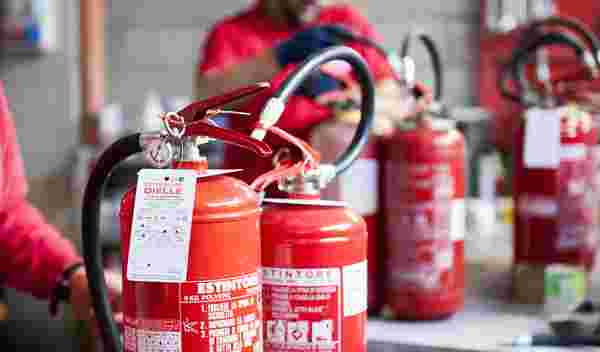The Scientific Principles Behind Fire Extinguisher Service

This article was originally published by penzu.com. Read the original article here.
In our daily lives, safety is a paramount concern, particularly in regard to fire hazards. A key player in this safety landscape is the humble fire extinguisher, a universal presence in buildings and facilities worldwide. However, the effectiveness of these devices hinges not just on their presence but on the meticulous fire extinguisher services they undergo. Understanding these principles is crucial not only for safety professionals but for anyone responsible for fire safety in their environment. This article delves into the scientific principles that underpin the service and maintenance of fire extinguishers. This knowledge empowers us to appreciate the complexity and importance of these life-saving devices, ensuring their readiness in emergencies.
The Chemistry of Extinguishing Agents
Different fires require different extinguishing agents. Water, the most common agent, is effective against ordinary combustibles but can be hazardous in electrical or oil fires. Foam agents are used to form a barrier on flammable liquids, preventing oxygen from fueling the fire. Powder-based extinguishers, like dry chemical ones, interrupt the chemical reaction of fires, making them versatile for various fire types. Lastly, CO2 extinguishers deprive fires of oxygen and are ideal for electrical fires, leaving no residue.
Physical Mechanics of Fire Extinguishers
Fire extinguishers are designed to be robust yet easy to operate. They comprise a pressure vessel containing the extinguishing agent. When activated, the pressure within the vessel propels the agent out through a nozzle. The design ensures a swift and effective discharge, which is critical in emergency situations. Different types of extinguishers, like cartridge-operated ones, may have a slightly different mechanism, but the underlying principle of quick and effective discharge remains constant.
Regulatory Standards and Best Practices
Following rules and best practices for fire extinguisher upkeep is super important. These rules make sure that fire extinguishers are taken care of in the right way so they work well when you really need them. People who look after these extinguishers need to keep learning and training. This way, they know all the latest rules and the best ways to keep the extinguishers ready to go. That's how these technicians stay at the top of their game, making sure everything is safe and up to standard.
The Role of Professional Fire Extinguisher Services
Think of professional fire extinguisher services as the expert team you call in to keep your safety gear in tip-top shape. These pros are really good at what they do. They offer fire extinguisher inspections, fix them up, and fill them up again with whatever they need to put out fires. These technicians use their skills to make sure that if there's ever a fire, your extinguisher is ready to jump into action, just like a superhero. They're all about keeping you and your place safe by making sure your fire-fighting gear is always ready to roll.
Last Note
Understanding the scientific principles behind fire extinguisher service is crucial for ensuring their effectiveness in emergencies. Regular maintenance, inspections, and fire extinguisher recharging are not just regulatory requirements; they are essential practices that safeguard our environments from fire hazards. For those seeking professional, reliable, and expert services in this field, Lone Star Fire & First Aid stands as a beacon of excellence, providing peace of mind and assurance of fire safety. Their commitment to quality service ensures that fire extinguishers are not just present but are in prime condition, ready to protect lives and property. For further details, you can visit Lonestarfirefa.com.
- Whats New
- Shopping
- Wellness
- Sports
- Theater
- Religion
- Party
- Networking
- Music
- Literature
- Art
- Health
- الألعاب
- Food
- Drinks
- Fitness
- Gardening
- Dance
- Causes
- Film
- Crafts
- Other/General
- Cricket
- Grooming
- Technology

